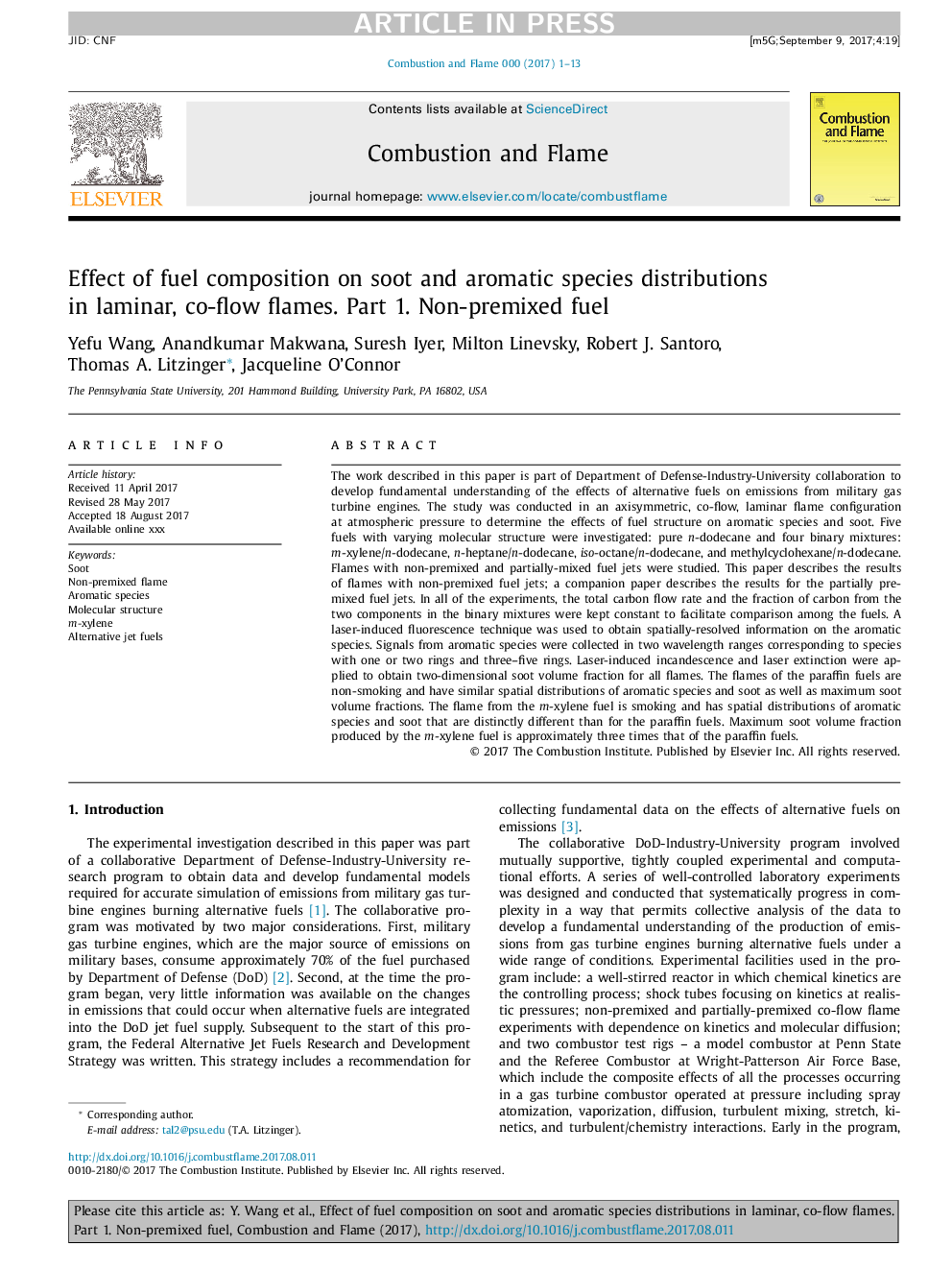| کد مقاله | کد نشریه | سال انتشار | مقاله انگلیسی | نسخه تمام متن |
|---|---|---|---|---|
| 6593929 | 1423548 | 2018 | 13 صفحه PDF | دانلود رایگان |
عنوان انگلیسی مقاله ISI
Effect of fuel composition on soot and aromatic species distributions in laminar, co-flow flames. Part 1. Non-premixed fuel
ترجمه فارسی عنوان
اثر ترکیب سوخت بر میزان توزیع گونه های دوده و معطر در شعله های لیمار، سیلندر. قسمت 1: سوخت غیرمستقیم
دانلود مقاله + سفارش ترجمه
دانلود مقاله ISI انگلیسی
رایگان برای ایرانیان
کلمات کلیدی
موضوعات مرتبط
مهندسی و علوم پایه
مهندسی شیمی
مهندسی شیمی (عمومی)
چکیده انگلیسی
The work described in this paper is part of Department of Defense-Industry-University collaboration to develop fundamental understanding of the effects of alternative fuels on emissions from military gas turbine engines. The study was conducted in an axisymmetric, co-flow, laminar flame configuration at atmospheric pressure to determine the effects of fuel structure on aromatic species and soot. Five fuels with varying molecular structure were investigated: pure n-dodecane and four binary mixtures: m-xylene/n-dodecane, n-heptane/n-dodecane, iso-octane/n-dodecane, and methylcyclohexane/n-dodecane. Flames with non-premixed and partially-mixed fuel jets were studied. This paper describes the results of flames with non-premixed fuel jets; a companion paper describes the results for the partially pre-mixed fuel jets. In all of the experiments, the total carbon flow rate and the fraction of carbon from the two components in the binary mixtures were kept constant to facilitate comparison among the fuels. A laser-induced fluorescence technique was used to obtain spatially-resolved information on the aromatic species. Signals from aromatic species were collected in two wavelength ranges corresponding to species with one or two rings and three-five rings. Laser-induced incandescence and laser extinction were applied to obtain two-dimensional soot volume fraction for all flames. The flames of the paraffin fuels are non-smoking and have similar spatial distributions of aromatic species and soot as well as maximum soot volume fractions. The flame from the m-xylene fuel is smoking and has spatial distributions of aromatic species and soot that are distinctly different than for the paraffin fuels. Maximum soot volume fraction produced by the m-xylene fuel is approximately three times that of the paraffin fuels.
ناشر
Database: Elsevier - ScienceDirect (ساینس دایرکت)
Journal: Combustion and Flame - Volume 189, March 2018, Pages 443-455
Journal: Combustion and Flame - Volume 189, March 2018, Pages 443-455
نویسندگان
Wang Yefu, Anandkumar Makwana, Suresh Iyer, Milton Linevsky, Robert J. Santoro, Thomas A. Litzinger, Jacqueline O'Connor,
